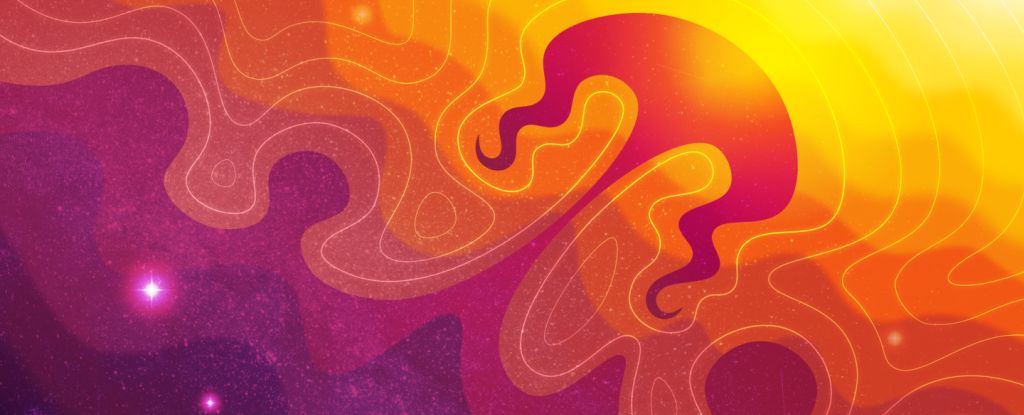An experiment here on Earth has just replicated one of the most extreme astrophysical processes in miniature.
Physicists at the Princeton Plasma Physics Laboratory (PPPL) have succeeded in creating collimated jets that resemble those that erupt from baby stars and feeding black holes.
Our lab version is nowhere near as large or powerful as those in space, which can extend for millions of light-years. But the results have revealed for the first time a long-hypothesized plasma instability that can help us understand how these eruptions form and launch into space at speeds close to that of light.
“These experiments show that magnetic fields are very important for the formation of plasma jets,” says PPPL physicist Will Fox. “Now that we might have insight into what generates these jets, we could, in theory, study giant astrophysical jets and learn something about black holes.”
Astrophysical jets are something of a mystery. They are long, narrow streams of plasma that shoot from the poles of certain cosmic objects along the axis of rotation.
In black holes, they form when the black hole is feeding; scientists believe that some of the material swirling around the black hole gets diverted and accelerated along magnetic field lines to the poles, where it is launched out in a jet.
A similar mechanism is thought to be in operation with baby stars, which feed from material in a similar fashion. But we don’t actually know the details of the jet’s formation, which is a fairly significant gap in our understanding of astrophysical processes.
Led by PPPL physicist Sophia Malko, a research team has now observed one possible mechanism.
The team wanted to study the interaction between magnetic fields and plasma, which is a state of matter consisting of ionized particles. To do this, they employed a technique known as proton radiometry, which used the deflection of positively-charged subatomic particles to map patterns in the plasma’s magnetic field.
The plasma was created by firing a laser at a thin plastic disk. Meanwhile a mix of protons and X-rays was created by firing lasers at a capsule of hydrogen and helium that underwent nuclear reactions when heated.
The protons and X-rays passed through a nickel mesh which was positioned between two powerful magnetic coils. Acting like a pasta extruder, the mesh forced the light and particles to form a grid of tiny beams.
Distorted by the plasma’s own electromagnetic interactions with the external magnetic field, the beams of protons served as a measure of the chaos within. Since the X-rays passed through unimpeded and undistorted, they provided a point of comparison for the behavior of the protons.
What the team observed was the magnetic field bulging outward under the pressure of the expanding plasma. As the plasma continued to push into the magnetic field, bubbling and frothing started to appear at the edges, resembling shapes such as mushrooms and columns – much like the way cold milk roils and blooms when you drop it in hot coffee.
frameborder=”0″ allow=”accelerometer; autoplay; clipboard-write; encrypted-media; gyroscope; picture-in-picture; web-share” referrerpolicy=”strict-origin-when-cross-origin” allowfullscreen>
“During the interaction, lots of structures form where the fields meet the plasma because there are drastic differences in temperature, density and the strength of the magnetic field,” Malko explains. “It’s a perfect place for them to grow.”
Finally, as the plasma ran out of energy, the magnetic field snapped back into position – which in turn caused the plasma to stream in a long, thin, collimated jet – like those that erupt from black holes.
That bubbling and frothing at the edges of the plasma was the truly interesting part, the researchers say – a phenomenon known as a magneto-Rayleigh-Taylor instability, a form of a known instability in fluid dynamics, with the difference being the involvement of the magnetic field.
“When we did the experiment and analyzed the data, we discovered we had something big,” Malko says.
“Observing magneto-Rayleigh Taylor instabilities arising from the interaction of plasma and magnetic fields had long been thought to occur but had never been directly observed until now. This observation helps confirm that this instability occurs when expanding plasma meets magnetic fields. We didn’t know that our diagnostics would have that kind of precision. Our whole team is thrilled!”
The observation doesn’t just have implications for astrophysics. Plasmas contained by magnetic fields make up the basis of a type of fusion reactor that, physicists hope, might one day provide efficient, clean energy.
Confining the plasma inside the magnetic field is a bit of a challenge; knowing more about how plasma and magnetic fields interact gives us more information to apply to future problem-solving.
“Now that we have measured these instabilities very accurately, we have the information we need to improve our models and potentially simulate and understand astrophysical jets to a higher degree than before,” Malko says. “It’s interesting that humans can make something in a laboratory that usually exists in space.”
The research has been published in Physical Review Research.





